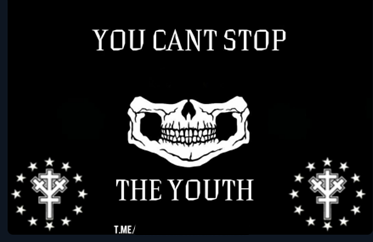CST Blog
We are Generation Terror!
14 December 2021

A new report published today by CST and the International Centre for the Study of Radicalisation & Political Violence (ICSR) looks at the growing phenomenon of far-right youth networks spreading anti-Jewish hate and inciting terrorism across Europe.

'“We are Generation Terror!”; Youth-on-youth radicalisation in extreme right youth groups', examines 10 racial nationalist groups across Western Europe, all of which are run by and composed of young people. It uses open-source material to explore the way in which these groups attempt to recruit and radicalise other young people into their movement.
In recent years, there has been a concerning increase in young people’s involvement in extreme right movements, with the number of child terror suspects arrested in the UK having tripled in the last year.[1] This increase in arrests has been coupled by increasing concerns over the grooming of young people into extremism by older individuals. This report takes a different approach, focusing on the agency young people possess by analysing the ideology, online activities, offline activities and threat posed by 10 racial nationalist youth groups across Western Europe. By doing so it demonstrates that young people are not only vulnerable to online grooming, but also increasingly themselves the groomers, the propagandists, the recruiters, the plotters and the convicted perpetrators.
All groups in the sample are composed of and run by young individuals, with an average membership age of under 25. These groups’ ideologies mirror those of racial nationalists more widely, with common themes such as a belief in the Great Replacement conspiracy theory, Islamophobia, xenophobia and homophobia. Antisemitism plays a key role in a lot of these groups’ ideologies, with the vast majority of groups spreading antisemitic conspiracy theories including Holocaust denial, and portraying Jews as the root of all problems. A number of groups have also actively and explicitly incited violence against the Jewish community, claiming to aim to bring about a “clean world”, “rid of the plagues of the Jew”.

The authors also identified the use of youth-specific narratives by some groups. Their youth conforms a core part of these groups’ in-group identity, which enables them to differentiate themselves from groups composed of older individuals. In addition, groups often push out narratives depicting young people as being both, those under threat and simultaneously those who should rise up to fight against their enemies. This framing, tailored towards recruiting other young people into their movement, increases the resonance of their message and has the potential of attracting young people into their group.
The report also analyses groups’ online activities and use of social media. As explored, young people value having a presence on mainstream social media platforms, which enable them to spread the word about their movement, reach out to wide audiences, and recruit into their group. Instagram was one of the most popular platforms across the sample, possibly as a result of the young demographics who populate the platform, with the majority of groups using it to recruit and showing a strong interest in maintaining a presence on Instagram. Twitter and TikTok and Telegram were also used by a number of groups, in particular to spread their ideology and recruit new members. This chapter ends by analysing two different mechanisms through which young extremists are bypassing mainstream social media companies’ moderation attempts, namely through the creation of backup accounts, and through a process of content funnelling, whereby groups post slightly more moderate content on mainstream social media platforms and then re-direct users to Telegram, where the more extreme content is hosted.

Groups’ offline activities also play a key role in their ability to attract and recruit young people into their movements. These activities play two main functions, namely fostering an in-group identity and inciting against the out-group. Regarding the former, sports, Mixed Martial Arts and hikes all play an important role in creating strong feelings of brotherhood which appeal to existing and potential members. A number of groups have also engaged in Community Service activities, thus lowering barriers for participation and highlighting the perceived failures of the governing elite. With regards to groups’ incitement against the out-group, marches, rallies and banner drops all play an important role. Stickers and flyers are also key, whereby groups often put up discriminatory and inciteful messages in their local area. This, alongside their flashy, visual and dramatic propaganda plays a significant role in attracting thrill-seeking youths to their movement.
Finally, the report takes an in-depth look at the threat posed by these youths, focusing on their incitement to violence and the conviction of group members for hate crime and terrorism offences. This evidences that despite their young age, teenage extreme-right groups and individuals pose an important threat which should not be disregarded.
Read the full report '“We are Generation Terror!”; Youth-on-youth radicalisation in extreme right youth groups'.
[1]https://www.independent.co.uk/news/uk/home-news/terror-threat-uk-children-cressida-dick-b1919154.html


